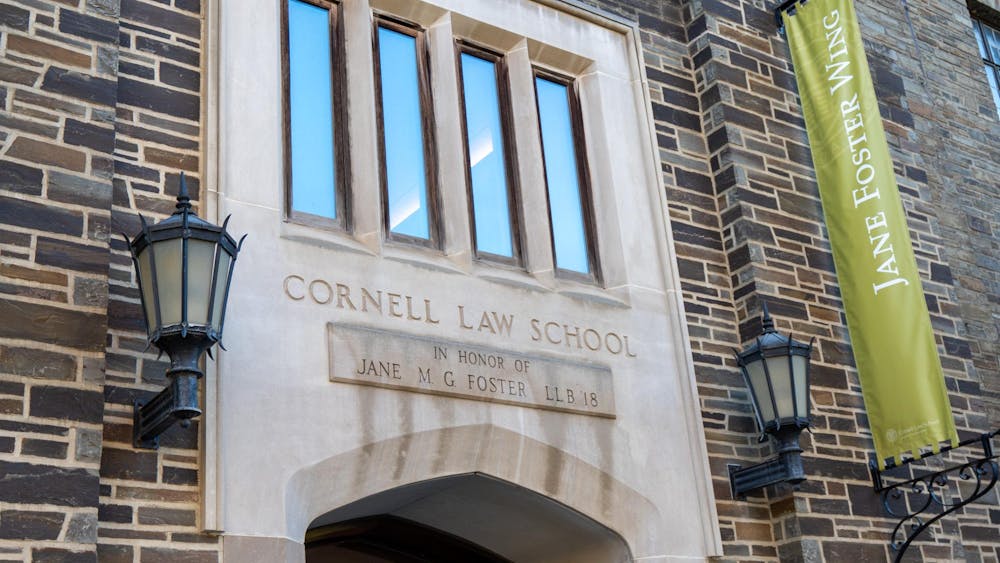Up to 25,000 deer die annually on N.Y. State highways, and an estimated 70,000 per year on all the roads in the state combined. What do road maintenance crews do with all that road-kill? If Cornell Waste Management Institute and the N.Y.S. Dept. of Transportation have it their way, road-kill deer will soon be composted. CWMI and NYSDOT are teaming up to offer five free workshops throughout the state to teach people how to safely compost deer killed by cars. In general, “there aren’t a lot of options for getting rid of road-kill,” said Jean Bonhotal, senior extension associate of CWMI. Highway maintenance crews can bury the carcasses in pits, move them further off the road or take them to a landfill. However, dragging deer further off the road poses a problem in more heavily populated areas, since residents do not want rotting carcasses in their yards. Odor is an obvious disadvantage, as well as possible contamination of groundwater. Landfills, another option, are becoming increasingly expensive. “Around 2003, landfills were becoming more strict about accepting road-kill deer,” said Elisabeth Kolb, the project manager from NYSDOT. “When some of the highway engineers and [N.Y. State Dept. of Environmental Conservation] heard about the practice regarding livestock composting, they thought it would be quite prudent to try the same with road-kill deer because we were running out of options.” CWMI started developing its composting method for carcasses about 10 years ago in conjunction with local farms. Passively aerated static pile composting involves woodchips and dead deer. Piles should only be eight to 12 feet wide and six feet high, although they can be as horizontally long as space allows. The decomposition process takes around one year to complete. To start, a good two-foot layer of woodchips is required. Then the carcasses are added and covered in more woodchips, two-feet deep on all sides. The woodchips “provide structure so air can move through the pile,” said Ellen Harrison, director of CWMI. Bonhotal describes the method as “such a perfect thing for people that manage roads,” given the easy availability of woodchips. Naturally occurring microorganisms break down the carcasses. The “biological processes are what transform materials, and the metabolism of the bacteria generates the heat” that kills most of the pathogens, said Harrison. Harrison emphasized that a certain amount of mass is necessary for the process to work correctly, making it difficult for individuals to set up their own composting piles. One deer carcass is not enough to build up the heat required to begin the process, which also makes it hard for individuals to set up their own. In a properly built pile, the temperature should reach 110 to 115 degrees Fahrenheit in just 12 to 24 hours. The process is much more feasible for local and state highway departments. NYSDOT has set up many composting sites all over the state, “usually in fenced areas, at our facilities,” said Kolb. Additionally, “we really want to extend the invitation for those workshops to the local highway people.” After a year, the piles can be used in a few ways. The first option is to use the material as the base layer for a new composting pile. Other options are to use it along roadsides or on farms that do not have food crops as fertilizer. “It makes sense to us to consider it a material that shouldn’t be highly accessible to the public,” said Harrison. Although the pathogens are greatly reduced by the heat build-up in the composting piles, one can never be too careful. With regard to workers who work with the carcasses and the compost, Harrison recommended, “Practice good hygiene, folks. Wash your hands.” Kolb said that NYSDOT “can use and apply the compost product in low public contact areas on highway right of ways” for purposes such as grass planting or landscaping. The benefits of composting road-kill are clear. As Kolb said, “it’s nature’s way of doing things, it’s controlled, we have rapid pathogen breakdown and it’s also cost efficient.”
Cornell Begins Composting Deer Killed on Roads
Reading time: about 4 minutes
Read More










